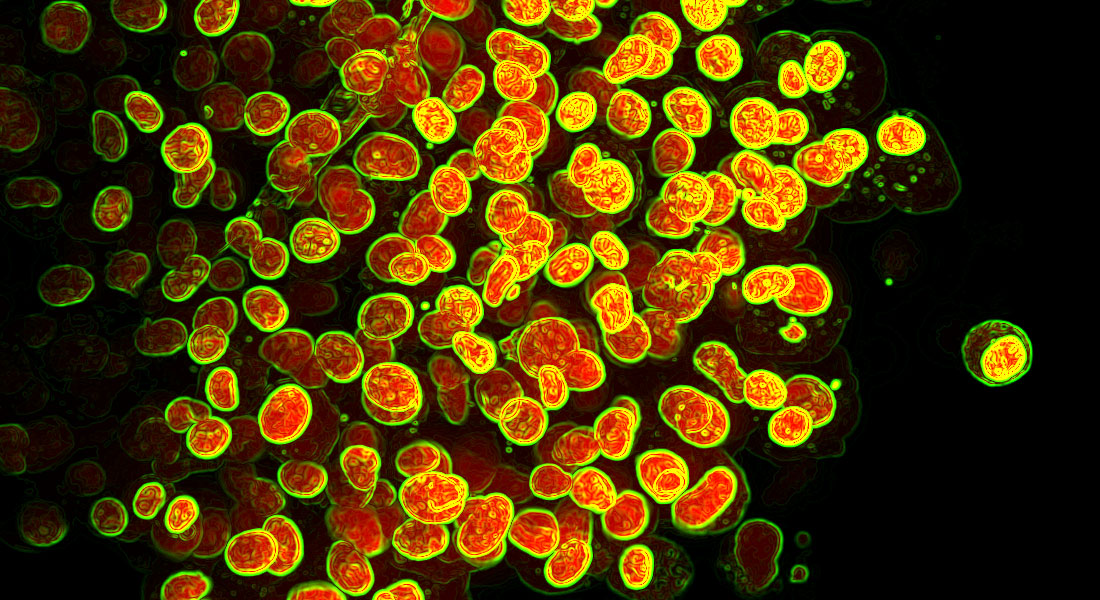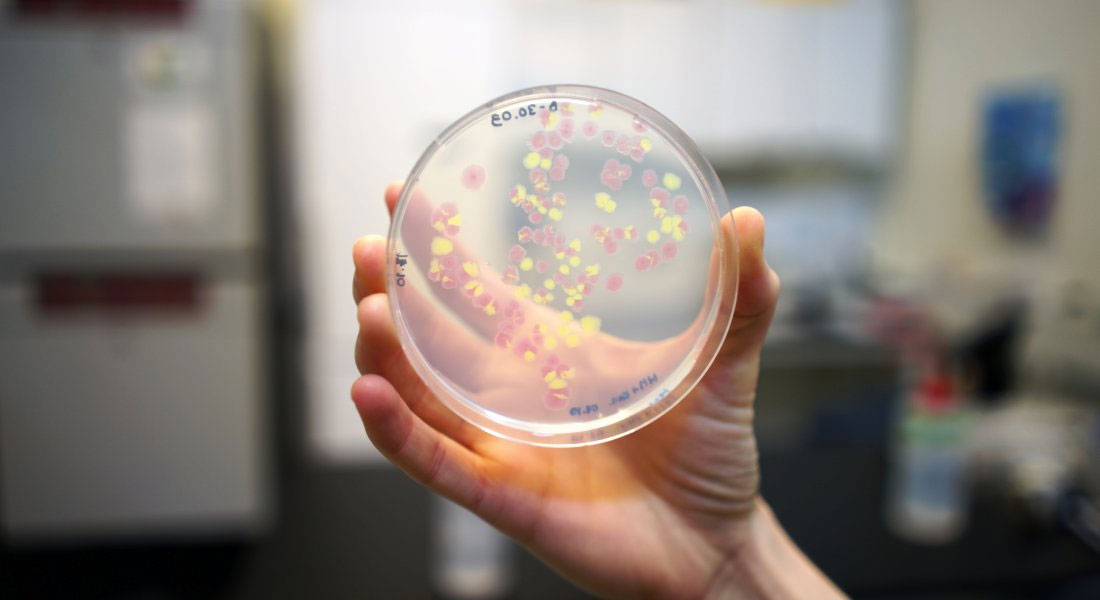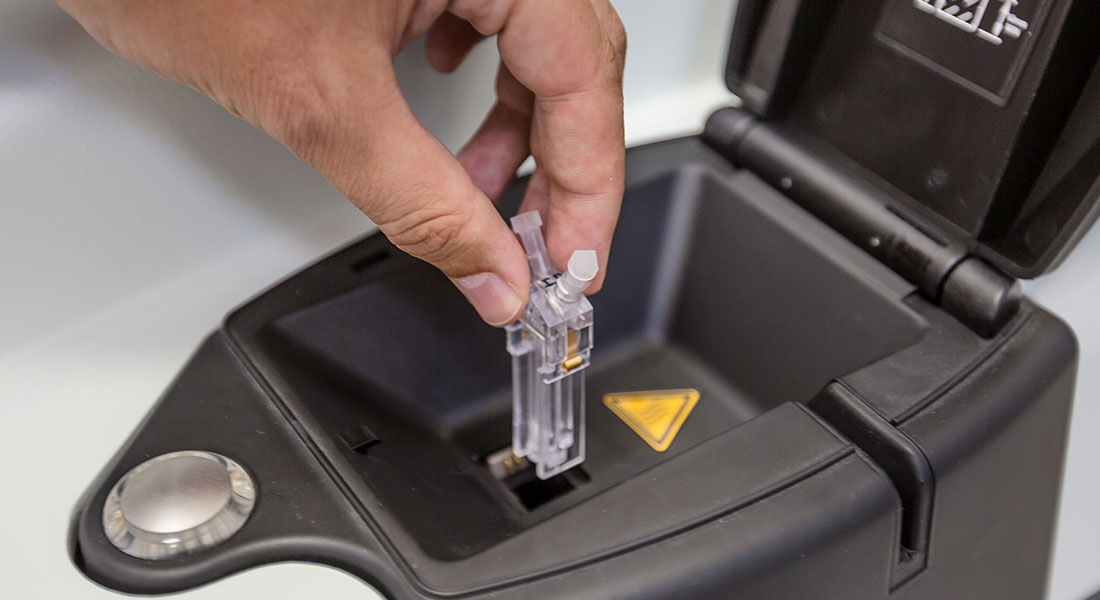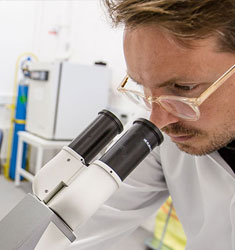Jauffred Lab
Part of Experimental Biophysics Lab
We use a multitude of imaging modalities, e.g., confocal scanning and light-sheet microscopy, in combination with measurements of force exertion, and in close collaboration with theoretical physicists, as well as biologists and geologists.
Our research topics extend from biofilm formation to cancer spreading patterns, with a focus on the biophysical aspects of intra-cellular interactions and motility and how they regulate evolutionary dynamics, and vice versa.
The lab is part of the BioComplexity section and the Exp Biophys Lab and is placed at the beautiful Niels Bohr institute at Blegdamsvej in Copenhagen.
The diversity of the microbial world arises in complex interplay between growth, cell-cell interactions, evolvement, and motility. To understand this, we seek to make mechanical models of population-level phenomena as spatio-genetic patterning in large cell communities.
We use a multitude of imaging modalities, e.g., confocal scanning and light-sheet microscopy, in combination with measurements of force exertion, and in close collaboration with theoretical physicists, as well as biologists and geologists.
Our research topics extend from biofilm formation to cancer spreading patterns, with a focus on the biophysical aspects of intra-cellular interactions and motility and how they regulate evolutionary dynamics, and vice versa.
HOW SELF-ORGANIZATION PROMOTES HORIZONTAL GENE TRANSFER
Funding: DFF Research Leader Sapere Aude grant (2020-2024), DFF Inge Lehmann grant (2020-2024), and EMBO short-term scholarship.
Collaborators: Sara Mitri (Unil), Namiko Mitarai (NBI), Stanley Brown (NBI).
Postdoc: Open position here: https://employment.ku.dk/faculty/?show=158138
Bacterial biofilms are ubiquitous and associated with quorum sensing, cooperativity, and resistance. Within biofilms, genetic information is exchanged among species from even distantly related taxonomic groups through horizontal gene transfer (HGT). This recombination is promiscuous and ensures that bacteria adjust rapidly to new environmental conditions. Many studies on HGT have focused either on single species or on large-scale genomic analyses. However, research on HGT associated with biofilm and colony-formation that contain a defined group of species in a more natural, yet controlled setting is still extremely rare. Without such research, it is impossible to fully understand the involved mechanisms of HGT in natural multi-species colonies.
Look up our most recent paper here: 2022.12.16.520725v1
NEW IMAGING MODALITIES FOR PLANT CELL WALL RESEARCH
Funding: DNRF Chair grant.
Collaborators: Staffan Person (PLEN, KU) and Pól Martin Bendix (NBI).
Postdocs: Guillermo Moreno Pescador and Samira Ebrahimi.
This cross-disciplinary initiative combines research strengths in optics, biophysics and biology in aim of constructing new versatile custom-made microscopes. E.g., different super-resolution and fluorescence set-ups, in combination with biophysical tools to address questions in plant cell and cell wall biology.
Possible MSc project: Scattering of light inside plant leaves. Plant leaves use light to drive photosynthesis, which in turn produce the oxygen we breathe, the food we eat and biomaterials. Photosynthesis has therefore been coined the most important biochemical reaction on Earth. The incoming sunlight interacts with the leaf in various ways. In particular, cell walls that surround each and every plant cell are birefringent and thus scatter and reflect light in various ways. The shape of the cells inside of a leaf is therefore important for the paths light take inside the leaf and thus also for the impact of reflected light on photosynthesis. In this project, a student would measure reflected wavelength distributions and intensities across a leaf of a wild-type plant and that of mutants that have changes to their leaf cell morphology. The student would also model paths of light inside a leaf via random walks and place this ion context to various leaf cell shape scenarios. This project thus combine optics, modelling and plant biology in a truly cross-disciplinary endeavor. The project may also extend to incorporate 3D printed models of leaves for outreach activities as engagement exercise.
CANCER CELL MOTILITY
Collaborators: Emma Hammarlund and Veneta Valerieva Gerganova (Lund University)
Therapy resistance in cancer is often linked to the infiltration into the surrounding tissue. For instance, when a subpopulation of tumor cells switches to a migrating phenotype and start collective or individual migration away from the main tumor. This is most often associated with the gain of stem-like properties and the ability to withstand therapy and cause sub-sequent recurrence. In aim of unraveling the strategies of motility, we do dynamic imaging to map trajectories of individual cells in 3D matrices.
Recent paper in Scientific Reports can be found here.
HOW MINERAL-ASSOCIATED BIOFILMS PROMOTE HORIZONTAL GENE TRANSFER
Collaborators: Karina Sand (GLOBE), Nicole Posth (IGN), and Emma Hammarlund (Lund).
As one of the co-founders of the Evolutionary Geobiology Consortium (EGC), I am enquiring the processes and pathways that drive evolution. We are focused on transitions, gene function, organization, cellular communication and the interplay with the physical and chemical environment. With robust control of the physical and chemical environment, we explore how e.g. oxygen, nutrition and stress levels influence cell and community growth, how mineralogy enables evolutionary processes and how element cycling are affected by its close environment. We aim to advance insights – both literally and conceptually – of the processes at the interface between life and the physical environment.
Our approaches cross temporal and spatial scales and we span from the molecular level to large system scales. We apply a range of methods and techniques ranging from fieldwork, carefully controlled lab-scale model systems, molecular interrogations of solid-fluid-molecule/tumor interactions and microbe-microbe relations.
We co-supervise students and encourage our students, associates and employees integrate across our research groups and research infrastructure. The founders have steering group meetings 4 times yearly and we host the annual consortium meeting. You are welcome to reach out if you are interested in joining a meeting or in hearing more about our activities etc.
Joining Exp Biophys Lab as a student
The Niels Bohr institute has many M.Sc. and PhD students. The students are closely attached to the research groups and supervisor and have many social activities for International and Danish students.
If you are interested in studying Biophysics, consider looking at these pages:
General information about the education, application, living in Denmark etc.
Joining Exp Biophys Lab with an external grant
We support researchers' applications to international and Danish public and private funding agencies.
If you come with your own funding, you will become a full member of the team with office space, access to IT and admin support, laboratories, and you are expected to contribute to the scientific and social life in the group. Examples of agencies funding research in biophysics in Denmark are Denmarks Independent Research Fund, Villum Foundation, Carlsberg Foundation and the Novo Nordisk Foundation.
Contact us at least 8 weeks in advance of the application deadline in the case of individual post doc stipends and smaller projects (i.e., 1-3 years, under DKK 3M). And at. least 3 months in advance of the application deadline in the case of larger projects.
The sections's faculty will review your request and assess your need for equipment, to ensure that the Institute can adequately house your project and the expected personnel associated with it.
If approved, we can provide considerable support for the application process, for example including budget development, text about the host institution, review of application's science case, and contact with the funding agency if needed. The Faculty of Science Research Funding Office at the University of Copenhagen also provides support for applications.
An application budget is developed online using the University's application tool and must be approved by the group leader and the Niels Bohr Institute at least one month before the application deadline. The budget process also facilitates the conversation about possible co-financing from the Institute or Center, laboratory set-up if needed, and any HR issues that need to be addressed.
Liselotte Jauffred, Research Leader
Blegdamsvej 17, 2100 København Ø
Building K, office Ka4
E-mail jauffred [at] nbi.dk
Phone +45 25721532
Students
| Navn | Titel | ||
|---|---|---|---|
|
Trang Nguyen
|
MSc student | glp572@alumni.ku.dk | |
|
Brage Haldor Thomsen
|
MSC student | chv625@alumni.ku.dk | |
|
Artemis Talliou
|
MSc student | bsf283@alumni.ku.dk | |
| Nathánaël van den Berg | MSc student | dfv249@alumni.ku.dk |
Staff
| Name | Title | Job responsibilities | |
|---|---|---|---|
| Search in Name | Search in Title | Search in Job responsibilities | |
| Sarlet, Adrien | Postdoc |
|
News on Biocomplexity and Biophysics
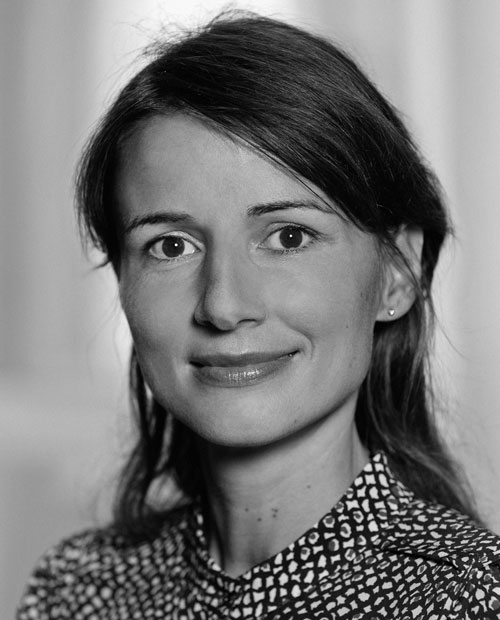
Liselotte Jauffred, Research Leader
E-mail jauffred [at] nbi.dk
Phone +45 25721532
Twitter @jauffred and KU page
OrcID 0000-0002-2223-9464
Experimental Biophysics Lab
We have a number of research facilities which we would also like to use for Research collaboration internationally, Industrial collaboration and Student projects.

